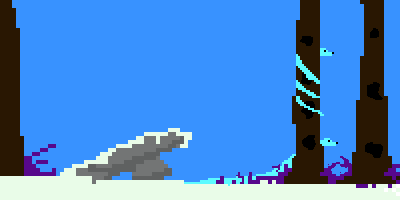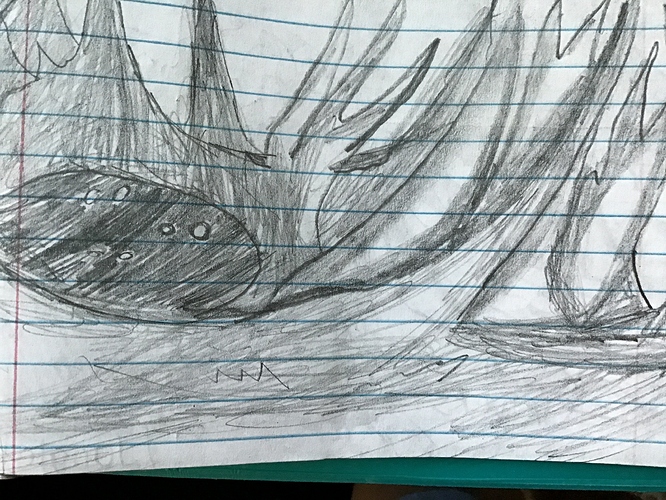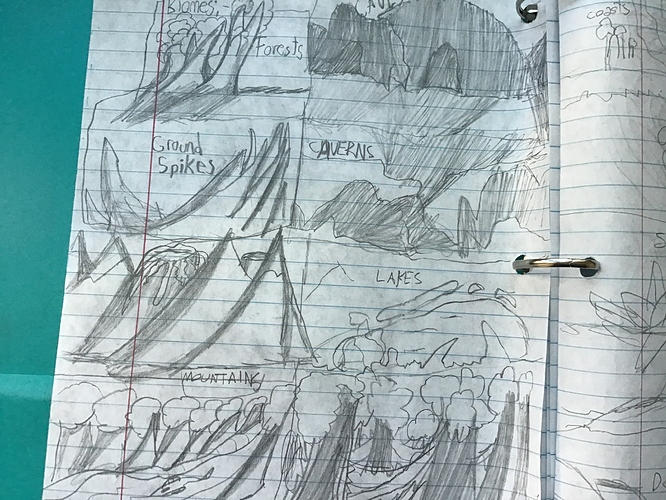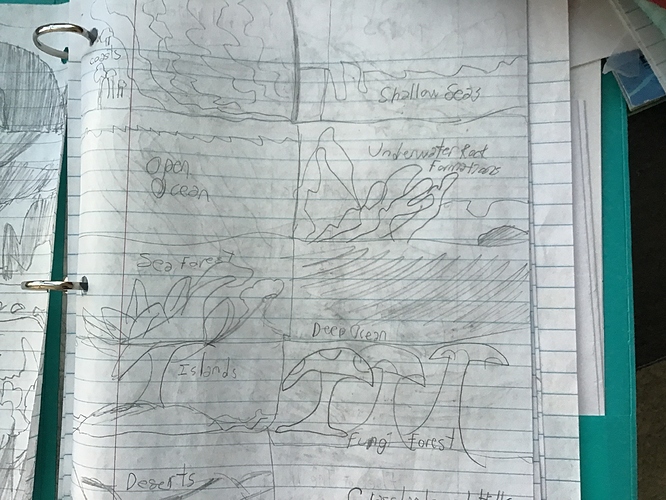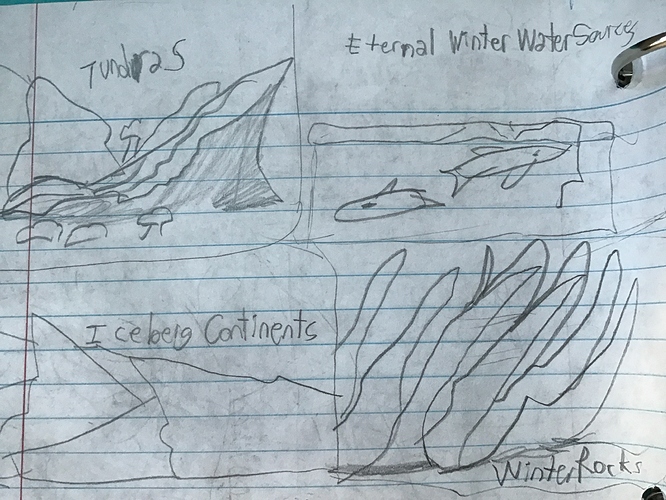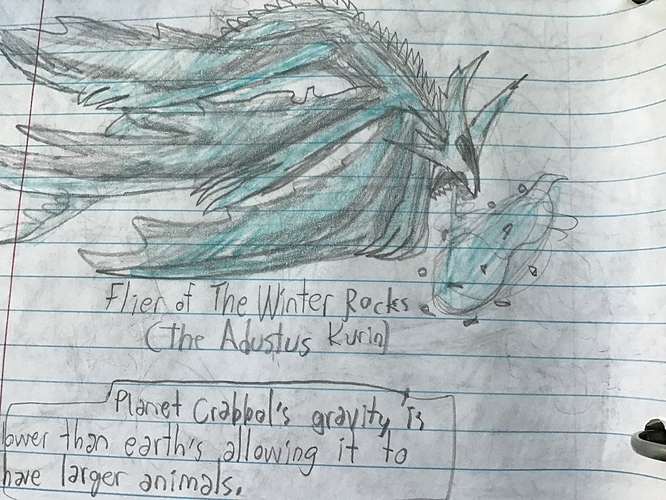Planet: Crabbol
Solar System: Cancer
Location in the galaxy: outer tenebrarum arm
A description of Crabbol
Crabbol has a mostly oxygen rich atmosphere as well as a lot of carbon dioxide and nitrogen. There’s also a bit of hydrogen sulfide too.
Crabbol has a rather humid climate due to the generally hotter temperatures around its continents. However the ice caps are much colder than on Earth’s. Due to the humidity of the planet, swamps are quite common as well as rainforests. Rock formations facing upward and going diagonally are very common things in Crabbol, as they are found everywhere except for forests, jungles, and rainforests.
There are few mountain ranges but the mountains are quite large covering up to 25% of all of the landmass.
Forests made out of fungi are common as well.
In the ice caps there lies a unique type of rock formation called the winter rocks. They are giant, taller than the tallest mountain in the planet, and they seems to be shaped like a rib cage. Few species can fly up to the top of the winter rocks and survive.
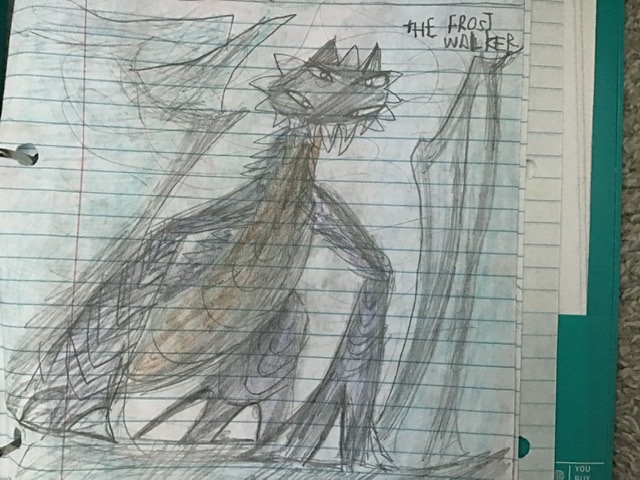
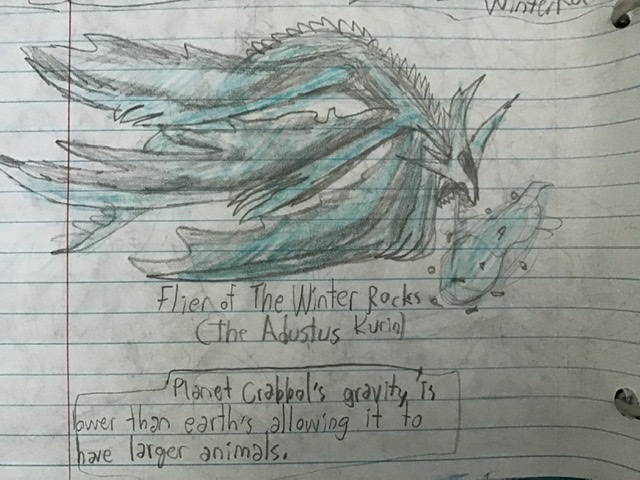
Illustrations of Crabbol
Species: Adustus Kurin
Scientific name: Frost Fliyus
Omnivorous
Habitat: Any cold place on Crabbol
Role in ecosystem: The second main predator of the ice caps
Abilities
Ice Breath - due to their colder habitat(s), they evolved a natural anti freeze: the ability to breathe ice. Breathing ice itself isn’t so useful in the ice caps of Crabbol, however it can be manifested into different things. For example you can use the ice breath to make icicle spears or ice shards come out of your mouth to injure prey or you can freeze someone’s leg so they can’t move.
Faster Healing - they have a faster healing cycle lasting up to three days to heal a medium wound, they also heal faster the colder their environment is.
Warm Blooded - they are warm blooded animals so they can control their body temperature.
Flight - They can fly because of their hollow bones and their four wings.
Altitude Resistance - because they are one of the few animals that can fly up to the top of the winter rocks without passing out and dying due to the lack of oxygen, they can fly very high. That is because they have developed a barely lack of need for oxygen so they’ll need few oxygen to survive. That grants them the ability to fly up high without making them dizzy or nauseous.
Subzero Survivability - they can survive in subzero temperatures.
Speed- they can go as fast as thirty five miles per hour in the air and twenty five miles per hour in the water.
Appearance
The Adustus Kurin is a large animal reaching up to lengths of ten feet, a height of six feet, and a wing span of thirty feet.
They are reptilian animals, so they have a lot of scales in their body.
They have sharp teeth at the front and flat teeth at the back of their jaws.
They have four wings, a large, thin tail, and a line of spikes from their neck to the tip of their tail.
Biological Description
The Adustus Kurin reproduces sexually. They lay eggs, and nest them typically on a hollow spot on top of the winter rocks.
Although mainly carnivores, they can eat plants as well. They usually travel around the planet but stay in the colder places. They are the second apex predator in their ecosystem, with the frost walker being the first. The Kurin and the Frost Walker seem to have a rivalry with each other due to them having mainly the same food source.
In the water, they move much like dolphins,
The Adustus Kurin is shown to be rather intelligent, slowly reaching spaience as the years go on.

